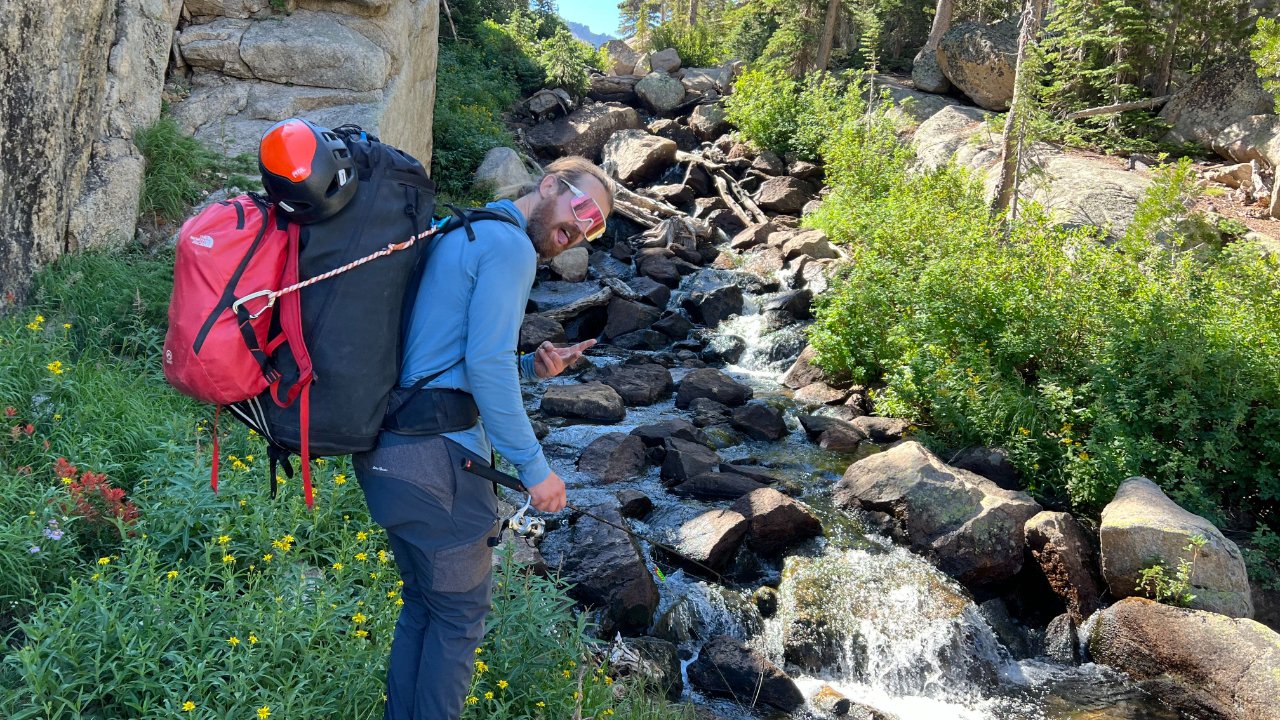DIY Programming: How to Create Workouts for Mountain Sports
A lot of people hit the gym without a plan or rationale for doing the exercises they do. Training without an aim is way better than not training at all. But if you work out twice a week for an hour without a program, those 104 hours per year aren’t doing you nearly as much good as they could.
Listen to the Episode on all podcast platforms:
If you don’t have a strength coach, you can still write programs that will help you prevent injuries and ski, bike, run, hike, and climb better. Let’s walk through a simple template you can use at the gym, at home, or while traveling:
Warm Up
Get sweaty or close to it. Try 3-5 minutes of cycling, jump roping, jogging, or rowing.
Do controlled articular rotations (CARs). Hit this link for a video on how to do them.
Plyometrics
Pick 3-5 exercises and do 3-5 reps of each for 3-5 sets (cheers to Dr. Andy Galpin for this)
Examples: Box jumps, lateral broad jumps, skater jumps.
Strength
Pick 5 exercises covering the categories below. Do 3-6 reps of each for 3 sets. Use “supersets,” meaning you’ll switch between 2-3 exercises rather than do 3 in a row of the same motion. The exercises below, linked with instructional videos, are examples.
A1: Upper body push: Bench press, dumbbell shoulder press, plank pushup.
A2: Lower body push: Lunge, step-up, ankle spring isometric hold.
B1: Upper body pull: Ring row, chin-up, dumbbell curl.
B2: Lower body pull: Romanian deadlift, back extension, barbell hip thrust.
B3: Core: Side plank, hollow body hold, v-up.
Cooldown
Pick a relaxing activity that will wind down your sympathetic nervous system (fight or flight) and switch on your parasympathetic nervous system (rest and recover).
Examples: Box breathing, low-intensity CARs, deep breathing while lying down.
That’s it. Here are some FAQs on this topic:
How long should my workout be? Aim for 1 hour. Remember, single-arm and single-leg motions take longer because you really do 6 sets total: 3 with the left, 3 with the right.
What if I’m traveling or don’t have any equipment? No biggie – use what you have. To warm up at home, I skateboard outside for 10 minutes because I don’t have any cardio equipment. It’s also fun. Hotel couches, desks, benches, stairs, etc. can all be workout equipment.
What equipment should I buy for home? My top recommendation is the Power Block, an adjustable dumbbell system. They can range from 5 to 100 lbs per dumbbell.
How long should I rest between sets? With supersets, aim for about 60 seconds of rest. Use your watch or a timer – it’s easy to get sucked into your phone between sets.
How many “reps” are there in an isometric hold like a plank? The conversion between reps and seconds depends on the motion. Usually, 20-45 seconds is comparable to 3-6 reps.
What if I’m home and can’t make an exercise hard enough for 3-6 reps? Increase the reps until it’s difficult. Just be sure to cover upper body push/pull, low body push/pull, and core.
Other questions? Hit us up @off_the_mountain_strength on Instagram or email ben@otmstrength.com

